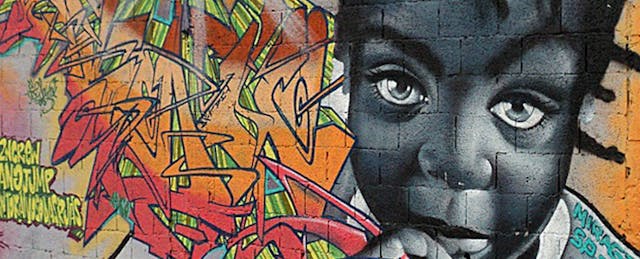“Information, knowledge and culture are central to human freedom and human development. How they are produced and exchanged in our society critically affects the way we see the state of the world as it is and might be…”--The Wealth of Networks, Yochai Benkler
Lourdes Lopez had a conversation with her mother that she had never had before. The focus of that conversation was not the young woman’s immigration struggles or even her undocumented status. The conversation was about her mother’s opinion of Lourdes’ level of English. The sixteen-year old Honduran was surprised when her mother said that she thought that now, after six years in the United States, Lourdes’ English should be better. The comment surprised and insulted the rambunctious but thoughtful teen. She was a good student but lacked the confidence to speak her mind outside of the EL classroom.
That conversation happened last August, when Lourdes (not her real name) and six other high school students taking my language development class at International Studies Academy in the San Francisco Unified School District began the school year with that interview assignment. I’ve been teaching English to non-native speakers for years and have found that using new media tools creates a production-centered classroom that introduces students not only to English but a new media literacy. The class becomes a team; each student learns to teach the others. Plus we get to shout to the world, “We are here!”--a declaration of confidence that may the hardest and yet most powerful lesson that we can teach English language learners.
Here’s how we did it: Soon after school started, I asked each student to do a reflection of themselves as language learners and then to interview someone who knew them well. Next, they created a video using iMovie in which they simply read their results aloud. This was the initial assessment for a framework called the Learning Record, a powerful evidence-based assessment originally developed in London. One key component to the Learning Record is to measure how you develop along the Dimensions of Learning: confidence and independence, skills and strategies, knowledge and understanding, prior and emerging experience, reflection and creativity, imagination and originality.
While the class is designed to develop academic English, the focus on new media literacy and production enables the students to bring the ideas on the page to life. They dig the production process and a finished product is a celebration. The content for the class was a textbook that concentrated on developing academic English with new vocabulary, using sentence and paragraph “frames.” (If you aren’t sure what a sentence frame or a paragraph frame is, picture a “MadLibs” booklet where you fill in the missing word in a story and you will get the idea.) After each unit, we created a movie, or rather a short -- just one to two minutes long.
One thing about developing media in the classroom is you have to have an infrastructure for where to place this media once it’s done. I have been using the open source Mahara for many years as my portfolio solution. Each student has an account. They populate it with media: a picture, an essay, a poster, an mp3, a movie and, at the end of a unit, they add a reflection about the unit and what they learned.
Because I wanted students to genuinely learn about media tools, we experimented with different movie making and sound editing software platforms. We made our first movies with iMovie. But when we created our second movie, which was about graffiti, we used Animoto. Our third movie, about women who play contact sports, we used a recording device to interview and WeVideo. And at the end of the year, we remixed our first assignment with Mozilla Popcorn.
The learning we did on one platform led to an enhanced understanding of the next platform. For instance, WeVideo was great because it stores everything in the cloud and students and teachers could access their work from both the school computer lab and from home. The students became very adept at making these video shorts and at curating their digital selves on their portfolio. And oh, yes, we also used Twitter to publish our WeVideo movies.
At the end of the school year, our students had online portfolios populated with three movies and a Popcorn remix. Among, them, Lourdes’ portfolio shined the brightest. When considering the Learning Record during her portfolio presentation, she said that through building these media products she gained confidence. This confidence, she said, extended beyond the class. Where she once used to just sit, listen and follow the crowd, she now voices her opinions more readily.
Maybe it is time her mother reassesses her fluency in English!


